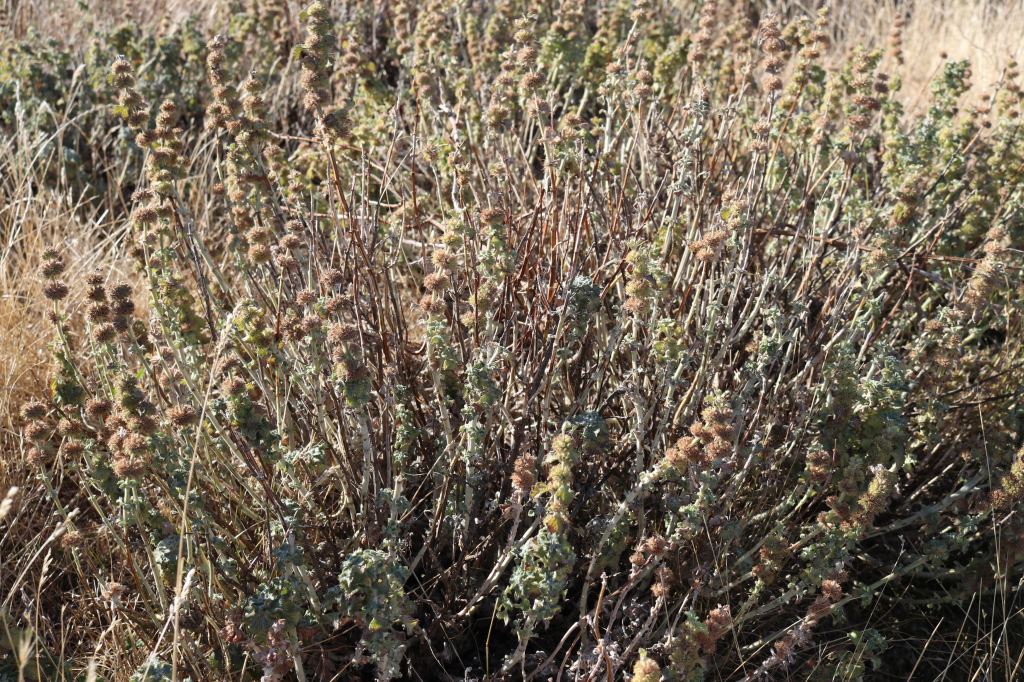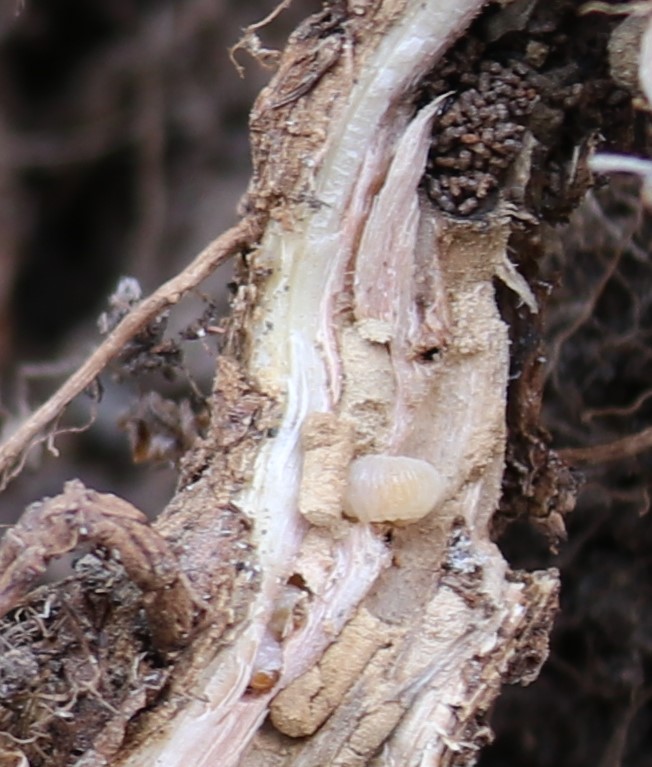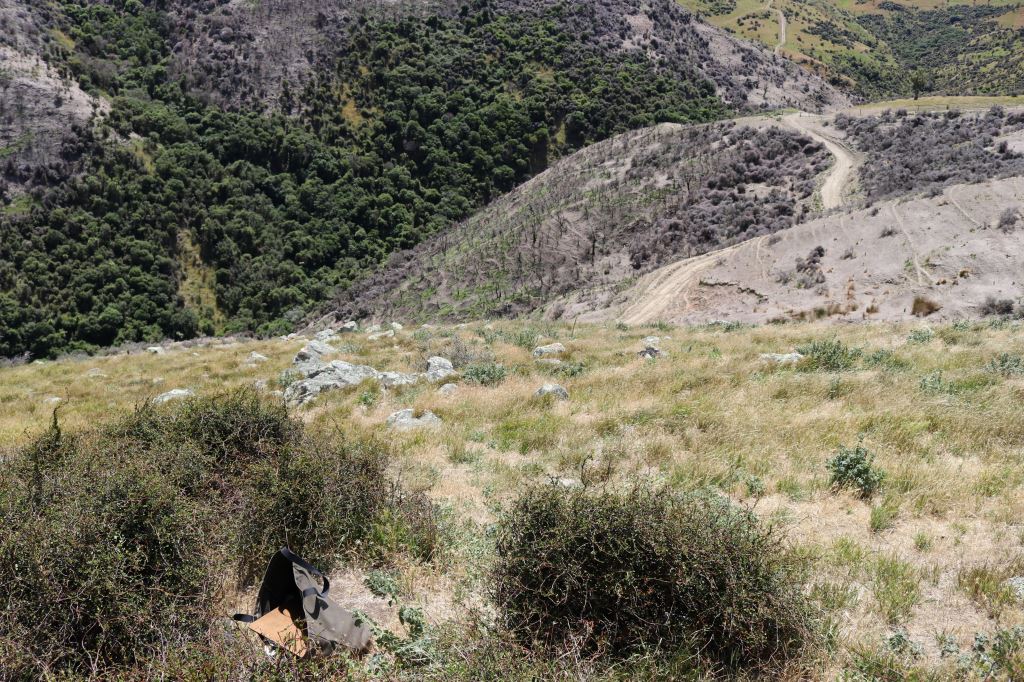Note: This content was originally sent out February 2021 but wasn’t posted on the blog. Belatedly:
Posted on behalf of the Horehound Biocontrol Group
Happy 2021 everyone,
Last week we visited a few release sites of the horehound biocontrol agents and we have great news to report: both agents now call New Zealand ‘Home’.
The clearwing moth and the plume moth have established at two sites each
Clear signs of the plume moth presence are now evident at one site in north Canterbury and one site at Marlborough. The stems of plants at the release point at these sites were completely stripped off their leaves, just like you would expect from the plume moth. There is nothing else around that would cause this type of damage, and the damage decreased further away from the release points. Therefore, we are convinced that the moth has established at these sites, and is starting to spread a bit further from the release points. It’s a bit like deer hunting, when you can’t see the animal, but you know it is absolutely there. We have not seen such effects at other plume moth release sites so far.
The clearwing moth is now established at one site at Mackenzie and at one site in North Canterbury. At both sites we could find young larvae inside the roots of weak-looking plants. That means that the moths have experienced the right conditions for mating twice now, which was the critical hurdle to cross. This is super great news. Affected plants are weak in the year of first being attacked. Plants were failing to flower and produce seed at the release areas, while plants further away were seeding as normal. Plants that have been attacked the previous year were dead. At the Mackenzie site the moths are starting to spread a bit further away from the release area, which is exactly what we were hoping to find. At the North Canterbury site the number and size of plants has gone down dramatically. Grass is in-filling the vacant space. We have not seen this establishment at other release sites we checked.




It is time to start planning, cautiously, a small-scale, strategic redistribution
Small-scale and strategic are the key points here! Remember, it is only two sites of each moth and we do not want to deplete them. The name of the game now is to locate a small number of sites that would tick the right boxes to maximise chances of establishment. Establishing new solid populations this way is key to enable more widspread redistribution in a couple of years.
Yes, I hear you! You want to be that site. But we must first try to tease out what worked at the sites that worked well and what may have interfered at the sites that did not establish, before we can define what we are looking for in a candidate site.
This will all happen in October-November, so for now, please sit back and enjoy a quite celebration of this significant progress to this point. These results are ultra-super-fast for a biocontrol project, and it continues to look as promising as it gets.
Best wishes,
Ronny & Gavin
You can find previous updates by checking the Horehound BioControl page here.
| Dr Ronny Groenteman Biocontrol Scientist Manaaki Whenua – Landcare Research Phone: +64 3 321 9904 Email: GroentemanR@landcareresearch.co.nz Website: www.landcareresearch.co.nz | Gavin (Snow) Loxton Sawdon Station PO Box 9 Lake Tekapo 7945 New Zealand Mobile: 0274412214 Email: sawdon@lupins.nz Website: www.lupins.nz |